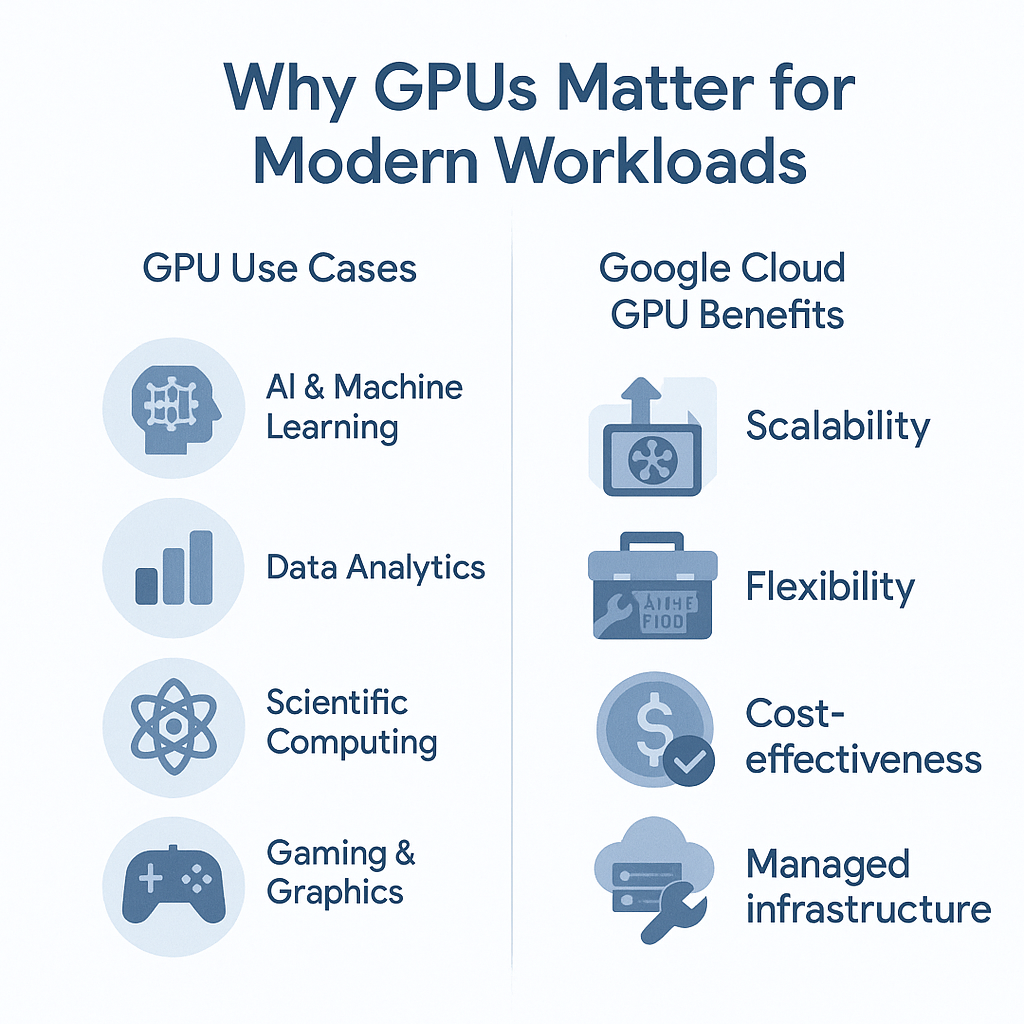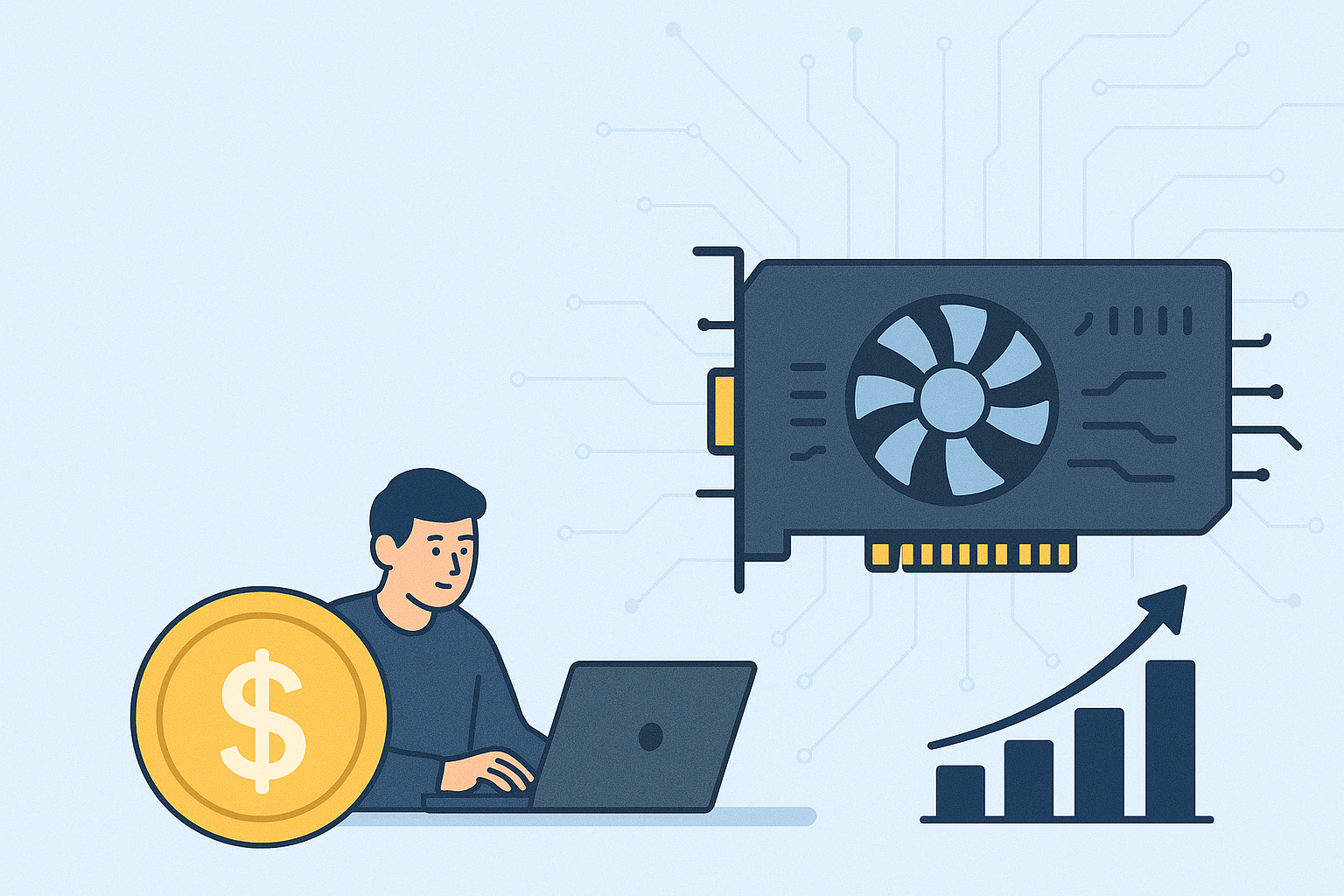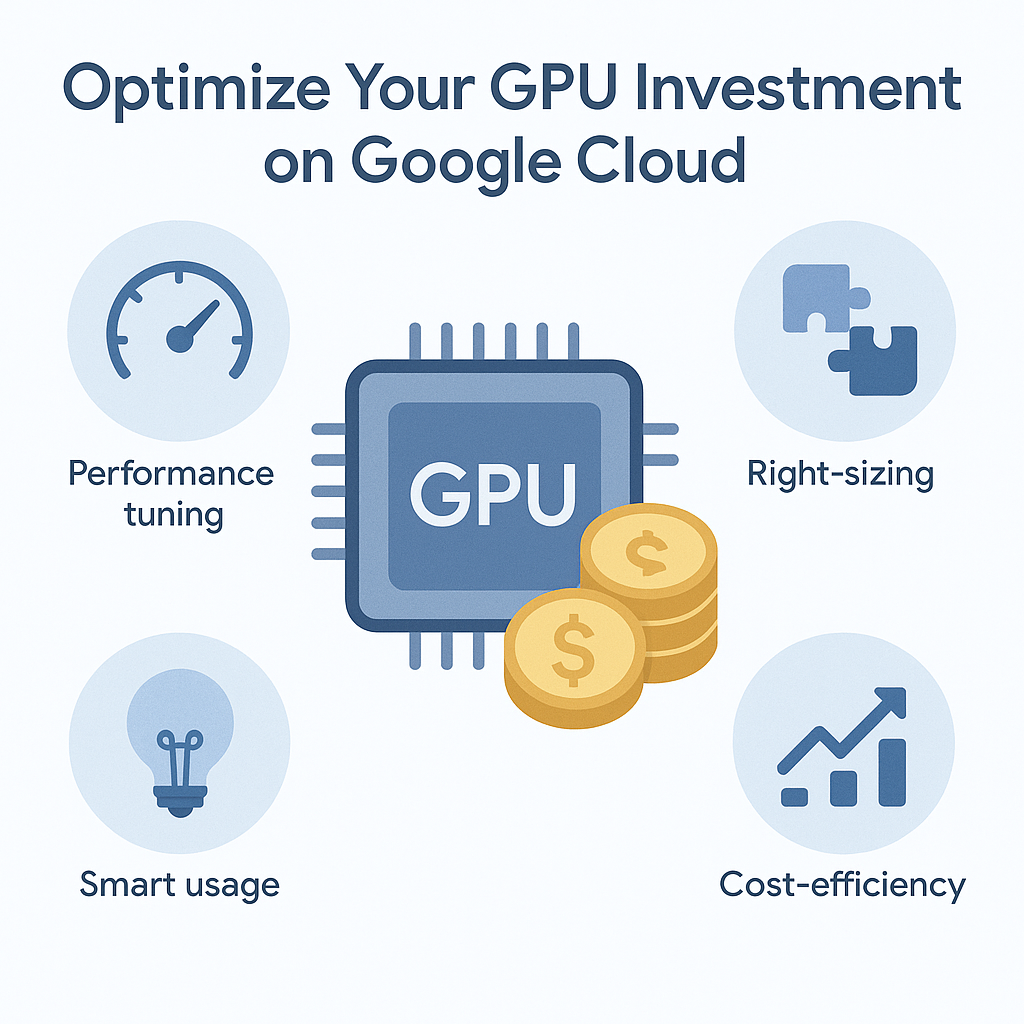Getting Started with GPUs on Google Cloud: Everything You Need to Know

In today's data-driven landscape, organizations are increasingly turning to GPU-accelerated computing to power their most demanding workloads. Google Cloud Platform (GCP) offers robust GPU options that can dramatically accelerate artificial intelligence, machine learning, data analytics, scientific computing, gaming, and rendering tasks. This comprehensive guide walks you through everything you need to know about deploying and leveraging GPUs on Google Cloud.
1. Why GPUs Matter in the Cloud

The computational demands of modern applications—particularly in AI, machine learning, and gaming—have outpaced what traditional CPU-only architectures can efficiently deliver. GPUs (Graphics Processing Units) excel at parallel processing tasks, offering significant performance advantages for specific workloads:
- • AI and Machine Learning : Training complex neural networks can be up to 100x faster on GPUs compared to CPUs
- • Data Analytics : Process and visualize massive datasets with dramatically improved performance
- • Scientific Computing : Accelerate simulations, modeling, and research computations
- • Gaming and Graphics : Enable high-quality, responsive gaming experiences with realistic visual effects
- • Rendering and Visualization : Support real-time 3D rendering and complex visualizations
Google Cloud's GPU offerings provide these benefits while maintaining the cloud advantages you expect:
- • Scalability : Scale GPU resources up or down based on your computational needs
- • Flexibility : Choose from various GPU types optimized for different workloads
- • Cost-effectiveness : Pay only for what you use, avoiding heavy capital investment in hardware
- • Managed infrastructure : Focus on your applications rather than maintaining physical GPU servers
2. Understanding Google Cloud GPU Options

Google Cloud offers several GPU options to match different performance needs and budget considerations. These can be categorized into three performance tiers:
Economy Tier
NVIDIA T4 GPUs on N1 VMs
Best for : Cost-effective inference, light ML training, general game development
Features : 16GB memory, good for general-purpose compute
Ideal workloads : Development environments, smaller ML models, light gaming applications
Mid-Range Tier
G2 VMs with NVIDIA L4 GPUs
Best for : Balanced performance and cost efficiency
Features : Optimized for inference and computer vision workloads
Ideal workloads : Video transcoding, computer vision applications, graphics rendering
NVIDIA P4, P100 GPUs (on select VM types)
Best for : Higher-end graphics processing and moderate to high-grade gaming
Features : Good balance of compute power and memory
Ideal workloads : Higher-end graphics, moderate AI workloads
High-Performance Tier
A2 VMs with NVIDIA A100 GPUs
Best for : High-performance AI training and inference
Features : Third-generation Tensor Cores, up to 80GB of memory per GPU
Ideal workloads : Deep learning model training, high-performance computing, complex data science
A3 VMs with NVIDIA H100 or H200 GPUs
Best for : High-performance computing and the most demanding AI workloads
Features : Fourth-generation Tensor Cores, up to 80GB of HBM3 memory
Ideal workloads : Foundation model training, complex simulations, advanced gaming with ray tracing
A4 VMs with NVIDIA B200 GPUs
Best for : Large-scale AI training and inference workloads
Features : Latest NVIDIA Blackwell architecture with significant performance improvements
Ideal workloads : Large language models, diffusion models, and enterprise AI applications
3. Key Considerations When Using GPUs on Google Cloud
Region and Zone Selection
GPU availability varies significantly across Google Cloud's global infrastructure:
- • High-availability regions : us-central1, us-east4, us-west1, and europe-west4 typically offer the broadest selection of GPU types
- • Specialized GPU access : A3 VMs with H100 GPUs have limited availability and may require capacity planning
- • Quota considerations : GPU quotas are set per region and may need to be increased for large-scale deployments
Performance Optimization
To maximize GPU performance on Google Cloud:
- • Right-sizing : Match your GPU type to your specific workload requirements
- • VM configuration : Pair GPUs with sufficient CPU and memory resources to prevent bottlenecks
- • Storage selection : Use high-performance SSD storage for data-intensive workloads
- • Networking : Consider placement for multi-GPU workloads to minimize latency
Security Considerations
When implementing GPU workloads:
- • VM isolation : GPU VMs follow the same security models as standard Compute Engine VMs
- • Network security : Implement appropriate firewall rules and VPC configurations
- • Image security : Use verified VM images with up-to-date drivers and security patches
- • Access control : Implement least-privilege IAM policies for GPU resource management
4. Popular GPU Use Cases on Google Cloud
Machine Learning and AI
Model training: Accelerate training of deep neural networks
Inference: Deploy trained models for low-latency prediction
Large language models: Power foundation models with specialized GPUs
Computer vision: Process and analyze visual data efficiently
High-Performance Computing
Scientific simulations: Accelerate molecular dynamics and modeling
Financial modeling: Run complex risk assessment models
Genomics research: Speed up DNA sequencing and analysis
Energy research: Accelerate seismic analysis and simulation
Gaming and Interactive Media
Game servers: Host high-performance game rendering engines
Graphics rendering: Create convincing and realistic game graphics
AI-driven features: Support advanced NPC behavior
Ray tracing: Enable advanced lighting effects
Media and Entertainment
Rendering: Transform 3D scenes into 2D images
Video transcoding: Convert media files between formats
Live streaming: Enable real-time video processing
Content creation: Power creative tools for designers
5. Cost Management and Optimization

GPU instances represent a significant investment, so it's essential to optimize your usage:
Understanding GPU Pricing
| GPU Type | On-demand Pricing |
|---|---|
| A4 VMs with NVIDIA B200 | $8-12 per GPU per hour |
| A3 VMs with NVIDIA H100 | $5-8 per GPU per hour |
| A2 VMs with NVIDIA A100 | $3-5 per GPU per hour |
| G2 VMs with NVIDIA L4 | $0.60-0.75 per GPU per hour |
| T4 GPUs on N1 | $0.35-0.45 per GPU per hour |
- • Commitment discounts : Save 20-50% with 1-3 year commitments
- • Spot pricing : Save 60-91% with preemptible instances for fault-tolerant workloads
Note : Exact pricing varies by region and commitment level. Check the Google Cloud pricing calculator for current rates.
6. Best Practices for GPU Deployment
Workload-Specific Optimizations
For AI/ML workloads
- • Use distributed training frameworks for multi-GPU setups
- • Implement mixed precision training when appropriate
- • Optimize batch sizes based on GPU memory
- • Consider GPU memory bandwidth alongside compute power
For HPC workloads
- • Implement efficient data transfer patterns
- • Utilize GPU Direct for faster I/O
- • Consider memory hierarchy in algorithm design
- • Profile workloads to identify bottlenecks
For rendering and visualization
- • Optimize scene complexity for available memory
- • Use GPU-specific rendering optimizations
- • Balance CPU preprocessing with GPU rendering
- • Implement progressive rendering for interactive applications
7. Conclusion
Getting started with GPUs on Google Cloud opens up tremendous possibilities for accelerating your computational workloads. From deep learning and AI to scientific computing and rendering, these powerful accelerators can transform what's possible in the cloud.
By understanding the available options and implementing cost optimization strategies, you can leverage the full power of GPUs while maintaining control over your cloud spending.
Ready to take your cloud applications to the next level? Start exploring GPU-accelerated computing on Google Cloud today!
Additional Resources
- • Google Cloud GPU Documentation
- • NVIDIA GPU Cloud (NGC) Catalog
- • Google Cloud Deep Learning VM Images
- • Google Cloud Vertex AI for managed ML with GPU acceleration
